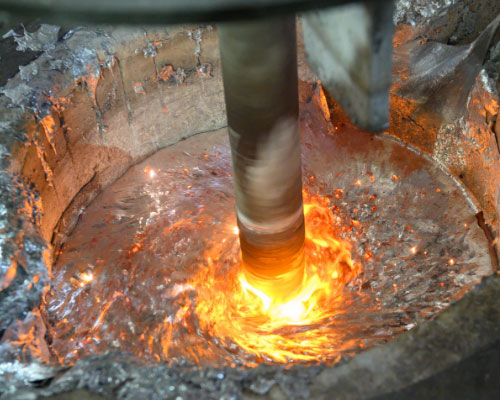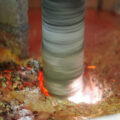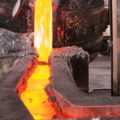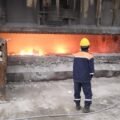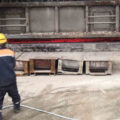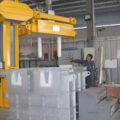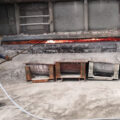Degassing Molten Aluminum is one of the most effective purification methods for aluminum. With the increasing demand for non-ferrous metal castings (especially aluminum and aluminum alloy castings), the pressure on foundry to improve casting quality is also increasing. As the technical specifications for most industrial applications, including construction, engineering, transportation, especially aerospace and automobile, its usage has increased rapidly in the past few years. In order to remove impurities from the melt to provide cleaner and better quality metal, one of the most common and effective cleaning methods used by foundry is rotary degassing. With the increasing global demand for tonnage and quality of aluminum castings, the globalization of the industry and the intensified competition among foundries, the foundry must operate the most efficient and cost-effective process in order to provide the castings with competitive price in the world.
There are two kinds of impurities found in molten aluminum: dissolved hydrogen and solid nonmetallic inclusions. As the metal cools, dissolved hydrogen escapes from the solution and forms harmful pores. This porosity and non-metallic solid inclusions reduce the strength and adversely affect the final properties of castings made of aluminum.
In the process of melting and subsequent transfer of molten metal, oxide scale is easily formed on the surface of molten metal. The resulting oxides are trapped in most of the molten material and then transferred to the finished casting. Other nonmetallic inclusions, such as carbides, nitrides or borides, can come from sources such as crucible materials or other refractory materials.
Any inclusions produced will lead to casting structural defects, which will have adverse effects on mechanical properties, and also cause machining difficulties and may damage the machine tool.
Therefore, the dissolved hydrogen and nonmetallic inclusions must be removed from the molten metal before casting in order to achieve the best quality. The treatment of metals that have been developed for cleaning is a physical process involving the use of inert gas fluxes. The hydrogen dissolved in the molten material diffuses into the rising bubbles of the flux gas and transfers to the surface of the molten material. The process depends on two main steps: Velocity of hydrogen diffusion into inert bubbles through diffusion boundary layer. Hydrogen concentration in inert bubbles.

Diffusion is the determination stage of degassing rate. Therefore, in order to achieve the best degassing efficiency, the following requirements must be met.
Inert gas has small volume and long residence time in molten metal. This ensures a large surface contact area between the inert bubbles and the molten metal, thus ensuring a higher mass transfer coefficient relative to the diffusion layer.
The distribution range of inert bubbles in the whole cross section of molten metal is very wide.
The full movement of the molten material accelerates the transfer of hydrogen to inert bubbles.
Molten material bath on a stationary surface to avoid absorption of fresh hydrogen from the reaction with the atmosphere.
Oxides and other non-metallic inclusions are mainly removed by flotation because small inert bubbles attach themselves to the oxide and then float to the surface of the bath. The principle applicable to hydrogen removal is also applicable to the removal of oxides.
AdTech online degassing unit can remove the dissolved hydrogen and solid nonmetallic inclusions in molten aluminum. The Degassing Unit mainly processes molten aluminum liquid containing a certain amount of hydrogen and other residues (alkali metals, slag inclusions), which are eliminated after processing by degassing equipment.
Working Principle: The process gas (inert gas or a mixture of inert gas and chlorine) is injected into the melt through the rotor and broken by the rotor into evenly dispersed tiny bubbles, which rise to the surface of the melt.

